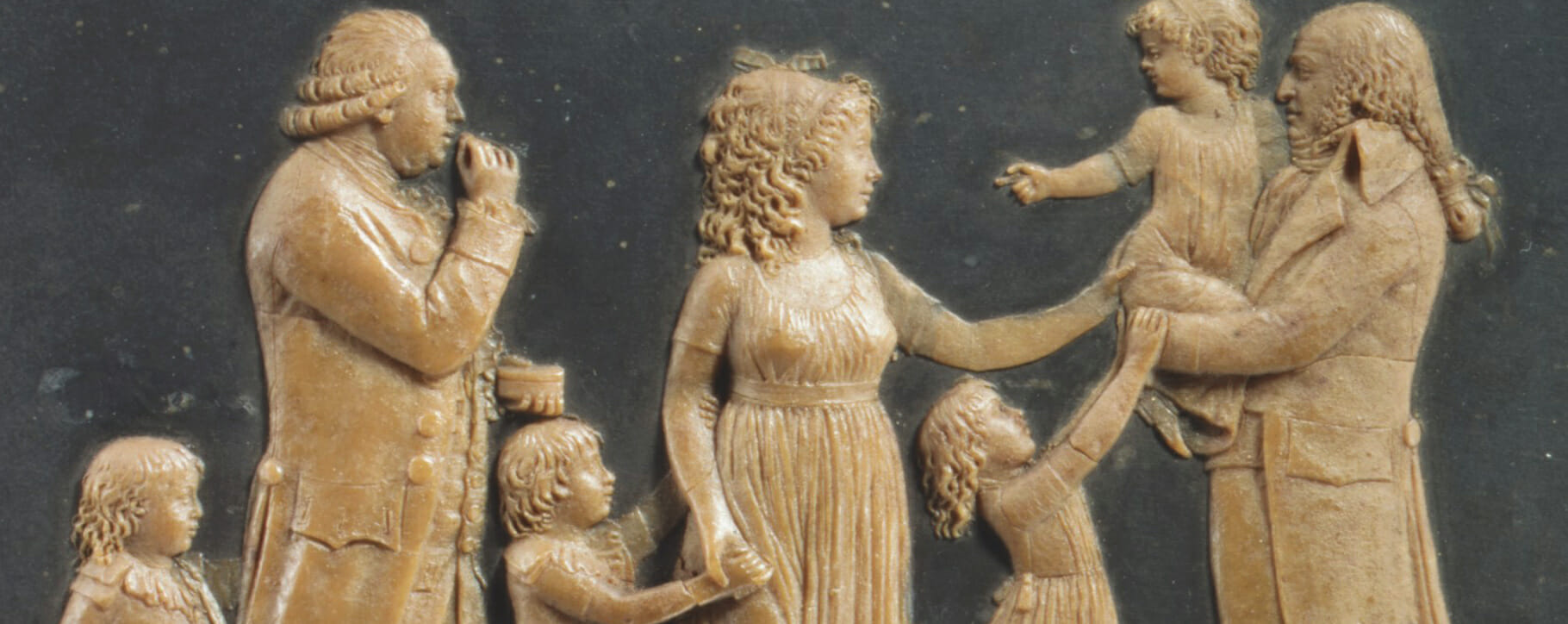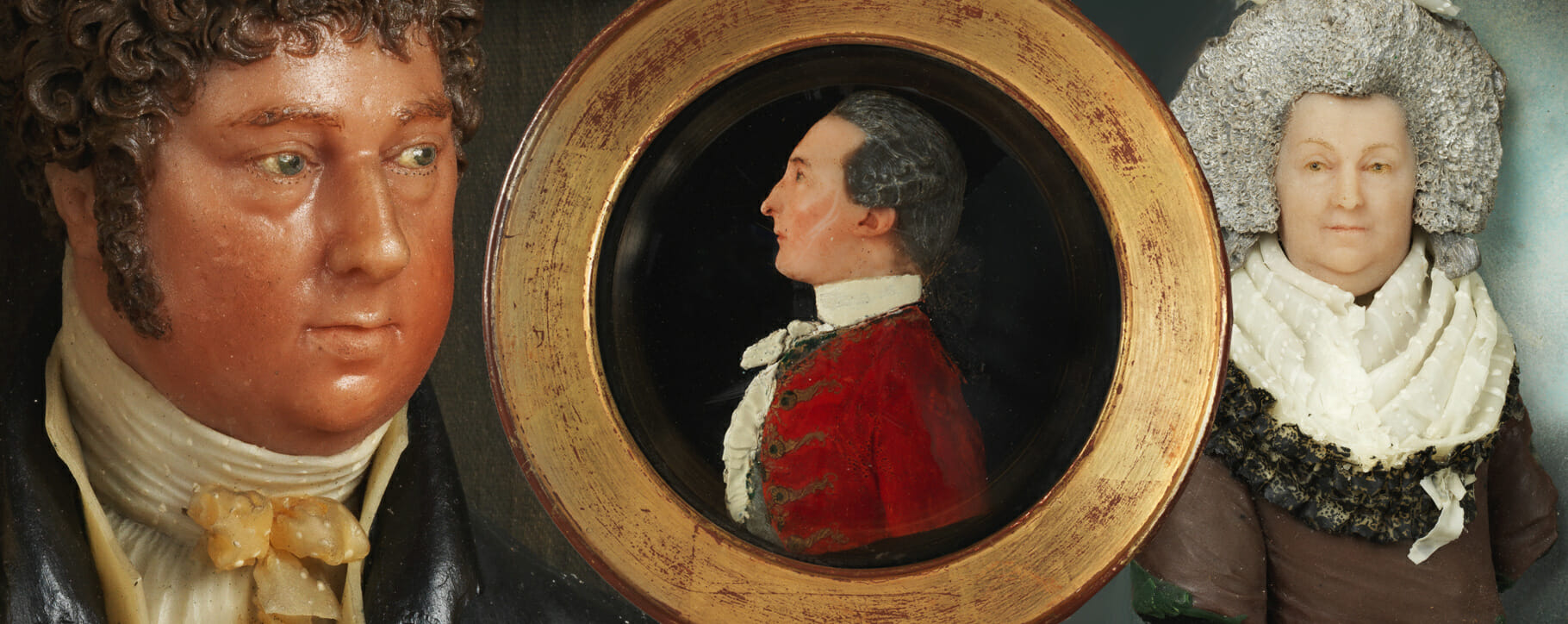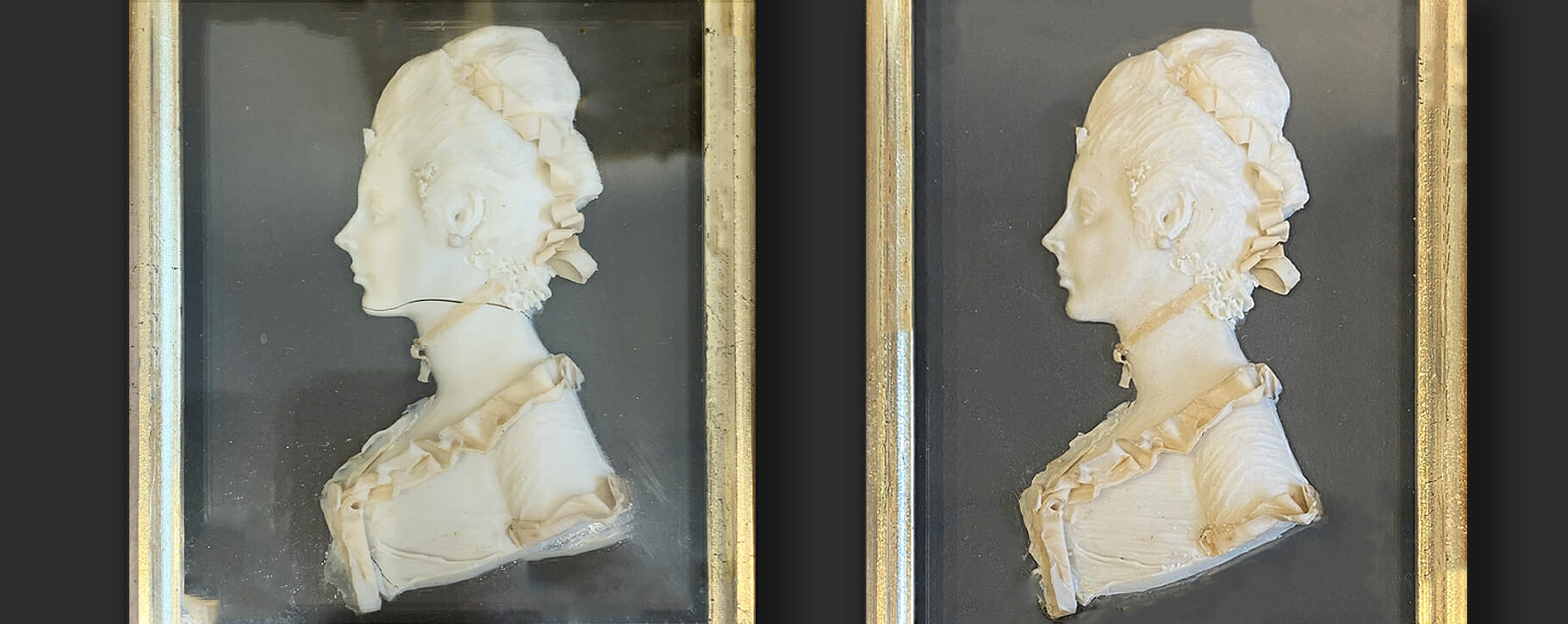Creating an artwork from wax has been practiced for thousands of years, from the casting of pieces in moulds, to relief portraits carved by hand. These unique wax sculptures often have an interesting history or connections to famous figures, but their material makes them vulnerable to deterioration if they are not looked after with diligent care.
Today, we may think of Madame Tussauds or one of the many famous wax museums around the world when considering wax as an artistic material. However, wax sculptures, and more specifically portraits, have a long and intriguing history which has seen them develop from religious icons through to famous faces.

The history and value of wax artworks
Wax figures can be dated back to ancient history, where pieces were created for funeral practices or worship. A famous example is of the votive offerings which ancient Greeks and Romans gave to their gods to gain favour or seek help. In some cases, wax sculptures would be hand crafted into the shape of a specific body part and the offering would be intended to seek medical assistance for a connected ailment. Similarly, wax offerings were made in churches in later periods.
From the Middle Ages through to the 19th century wax was very popular in Europe as a way of creating death masks and effigies. A death mask is a casting of a deceased person’s face, in order to capture their likeness for their family, or in the case of a famous figure for the public to view. Westminster Abbey has a collection of wax masks, including the effigies of Horatio Nelson, Mary Queen Of Scots, Charles II and Oliver Cromwell. These occasionally come up at auction and can be met with enthusiasm by eclectic buyers or those who collect items in relation to specific historic figures.
During the renaissance, masters of wax appeared alongside those of traditional artworks. Sculptors would often create their drafts in wax and practice their skill in this material. Surviving examples in the Royal Collection and British Museum include the work of Michelangelo. Wax relief portraits also became popular in this period, with the craft attributed to Antonio Abondio, who created pieces for the courts of Northern Europe. Recent estimates of Abondio’s portraits have reached £15,000.

In the 18th century wax was used to create anatomical examples, including lifelike replications of body parts for medical studies. Wax relief portraits continued to grow in popularity, as did the creation of full size sculptures of a living or deceased person. Most notably, Madame Marie Tussaud, who worked for the aristocracy as an expert in lifelike wax figures. Tussaud was arrested during the French Revolution and almost sent to the guillotine, but was saved when she was commissioned to take the wax death masks and entire wax body casts of those who were executed during the political upheaval, including the figures of Louis XVI and Marie Antoinette.
French artists such as Rodin and Gauguin used wax in their work, with later contemporary pieces also bringing in this medium as a unique and flexible material for a wide range of artworks.
Today common wax relief portraits sell for a few hundred pounds, but those with important connections can go for a few thousand. Recent auctions have seen a 19th century wax sculpture of a gentleman and a dog estimated at up to £10,000. In 2016 a wax portrait of Nelson sold for £5,625 at Bonhams. In 2018, a group of Victorian wax figurines sold for £4,750 at Christie’s.
Wax portraits may also be combined with other antiques, in 2015 a neoclassical cabinet containing 31 wax portraits on panels sold for £56,250 at Sotheby’s.

Wax artwork facts
- Degas’ well known sculpture ‘Little Dancer’ was originally crafted in wax, and dressed in real clothes with a wig made of real hair. All but the hair ribbon and the tutu are sealed in wax.
- Contemporary artist Lynda Benglis frequently uses wax in her artwork, in 2019 one of her wax pieces sold for over £80,000.
- A waxwork figure of Abraham Lincoln sold for $9,350 in 2017.
- A 19th century wax family portrait far surpassed an estimate of $7000 in 2015, selling for $31,250.
- In 2020 a collection of wax letter seals from famous figures including William Pitt, Marie Antoinette and Benjamin Franklin was sold for £5,250 at Sotheby’s.
- In Hong Kong, an Italian wax anatomical figure of a head sold for over £30,000 in 2017.

Caring for wax portraits and wax sculptures
Made from beeswax, these artworks may be plain or coloured with various pigments and tinting. The colour of the piece will likely be susceptible to UV rays and heat from the sun, so it is recommended that these pieces are kept in a cool and shaded environment. The standard light level for wax artworks is 150 LUX with a maximum UV level of 75 microwatts per lumen.
In warm or high temperatures a wax portrait can have it’s details deformed or melt leaving catastrophic damage. However, in temperatures which are very low, the wax may begin to crack and be brittle due to a loss of moisture and elasticity. The ideal temperature for wax models is between 10 to 20 degrees celsius.
Humidity should be kept at relative or low levels to avoid rusting of any metal bars or supports within the wax, as this secondary deterioration can lead to damage to the sculptural elements.
A wax artwork may have a slightly sticky surface, leading to a build up of contamination or dust if it is left uncovered. Some of these particles may have become embedded into the wax itself. When storing wax figures it is important to store them in a sealed dust-free cupboard or container, when on display ensure that any glass casing is professionally fitted to avoid debris build-up.
For a framed portrait or a sculpture on a pedestal, you may want to consider restoration for any decay in display structures. Deterioration to the surrounding support of the sculpture may lead to heightened vulnerability for the wax.
Accidental damage may also occur to a wax piece, via a fall or knock to the artwork. If this occurs, be sure to collect all fragments of a broken sculpture, as our team will aim to restore from the original. Where pieces are missing, our team may ask whether you’d like them to recreate a seamless section to avoid visual disruption to broken areas.

Restoring wax artworks
Wax figures and portraits can be cleaned by a professional conservator using a light flow of air to gently remove particles on the surface. This is followed by a soft brush to remove further contaminants. The piece can then be cleaned with a specialist solution, cleaning one small area at a time under a microscope if required. This process allows the artwork to be cleaned without smudging or dislodging any of the colours or fine details. Any visible metal parts which reside beneath the wax can also be cleaned of corrosion and lacquered to prevent deterioration.
Cracks and breakages can be readhered or stabilised with water-based solutions, this will prevent any deterioration from incompatible chemicals within these lines. The piece may require support during this process, to allow the artwork to dry in perfect alignment.
Our team restored a portrait in wax which had suffered a severe breakage to the neck. This was an ancestral piece for our client’s family dating back to 1810. The damage was accidental, leading to a clean break in the wax relief.
The piece was gently cleaned and the head replaced onto the body with a tailored solution. The result was met with delight from our client, who remarked that the portrait showed no evidence of the previous damage or repair.

Above: wax cameo portrait before and after restoration by our conservator
Contact our team for further information
If you have any questions related to wax sculptures and artworks, or have a piece in mind for restoration work, please contact our team who will be happy to assist.
You can contact us via email [email protected] or telephone 0207 112 7576
You may also be interested in:






